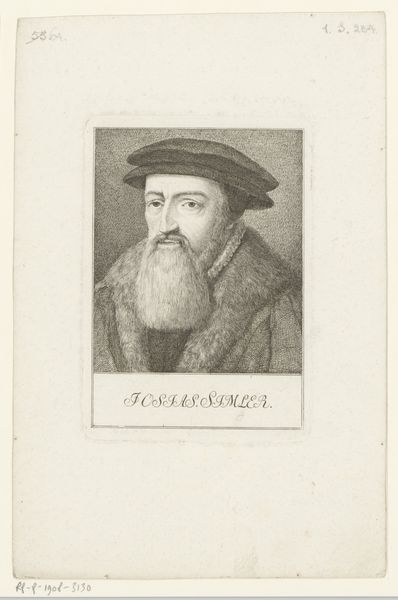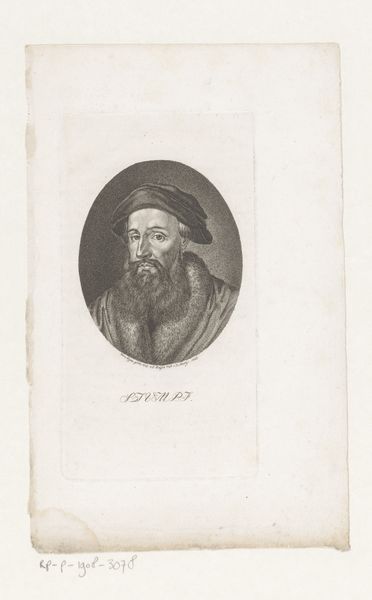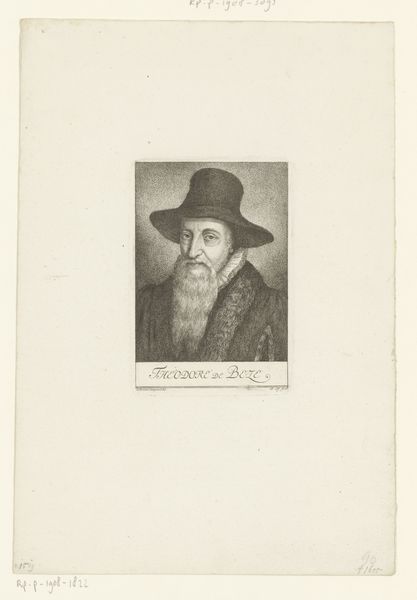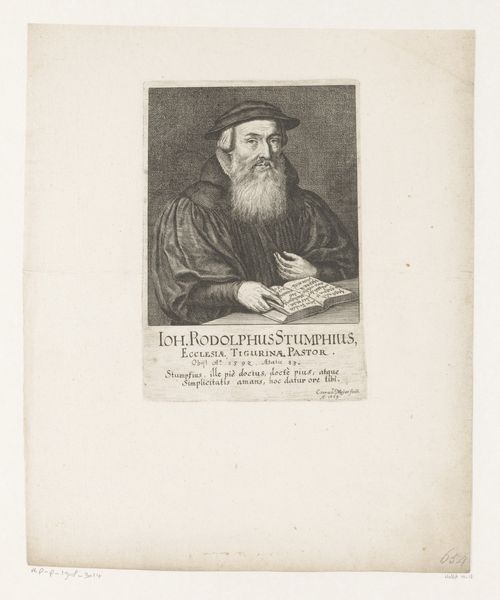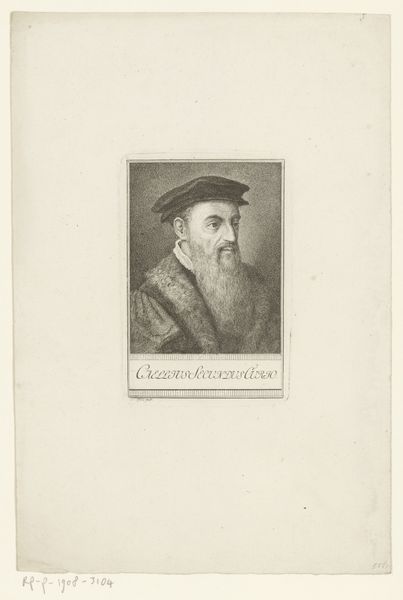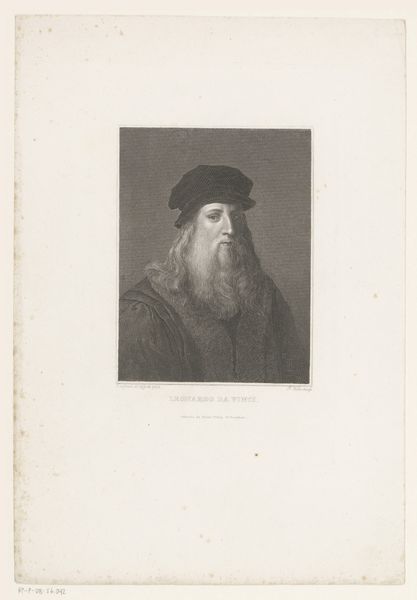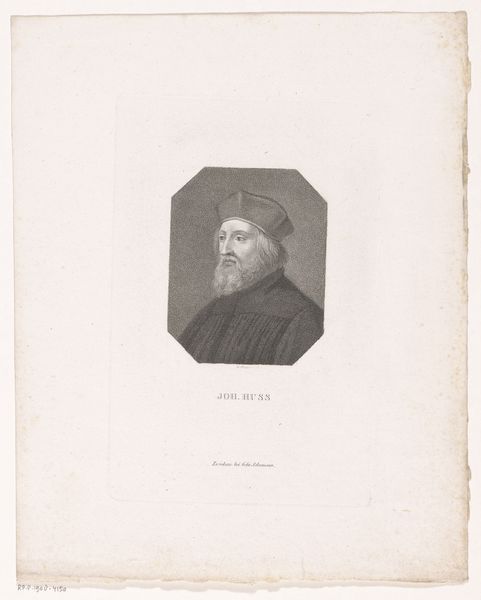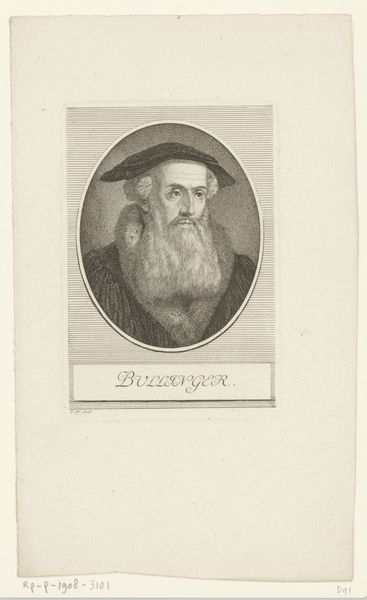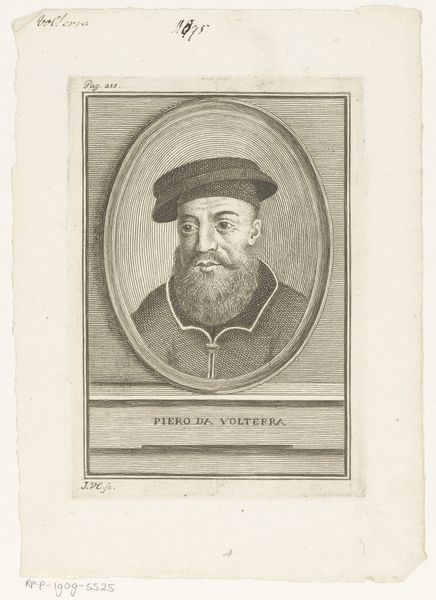
print, engraving
#
portrait
#
pencil drawn
# print
#
pencil sketch
#
old engraving style
#
history-painting
#
engraving
#
realism
Dimensions: height 127 mm, width 79 mm
Copyright: Rijks Museum: Open Domain
Editor: So, this is a print entitled *Portret van Johann Fichard*, dating roughly from 1759 to 1815, by Heinrich Pfenninger. The engraving, displayed in an oval frame, depicts a serious-looking gentleman. What stands out to me is how meticulously detailed the rendering of his beard and fur collar is. What can you tell me about it? Curator: This print offers a glimpse into the role of portraiture in shaping historical memory and public perception. Consider the subject, Johann Fichard, a jurist. Why was he deemed worthy of immortalization through print? Editor: Presumably, his social standing warranted a portrait. How would it circulate? Curator: Exactly. Prints like these were often commissioned to disseminate images of important figures within intellectual or political circles. Consider the engraving itself: what does the choice of this medium suggest about the intended audience and its function? Was it aimed at a wider public? Editor: The lines look crisp, perhaps suggesting precision and therefore, I assume, aimed for educated people? I guess this realism in art meant not just showing someone, but validating their historical imprint? Curator: Absolutely. The commitment to realism and accuracy reinforced the subject's importance and legacy, becoming part of a larger visual archive contributing to our collective historical narrative. Does this shift how you see it now? Editor: I realize now that I need to think more critically about who is being represented and how it contributes to their presence and recognition in history. It is a fascinating perspective, thank you! Curator: My pleasure. It is crucial to reflect on how art acts within the society in which it exists.
Comments
No comments
Be the first to comment and join the conversation on the ultimate creative platform.

